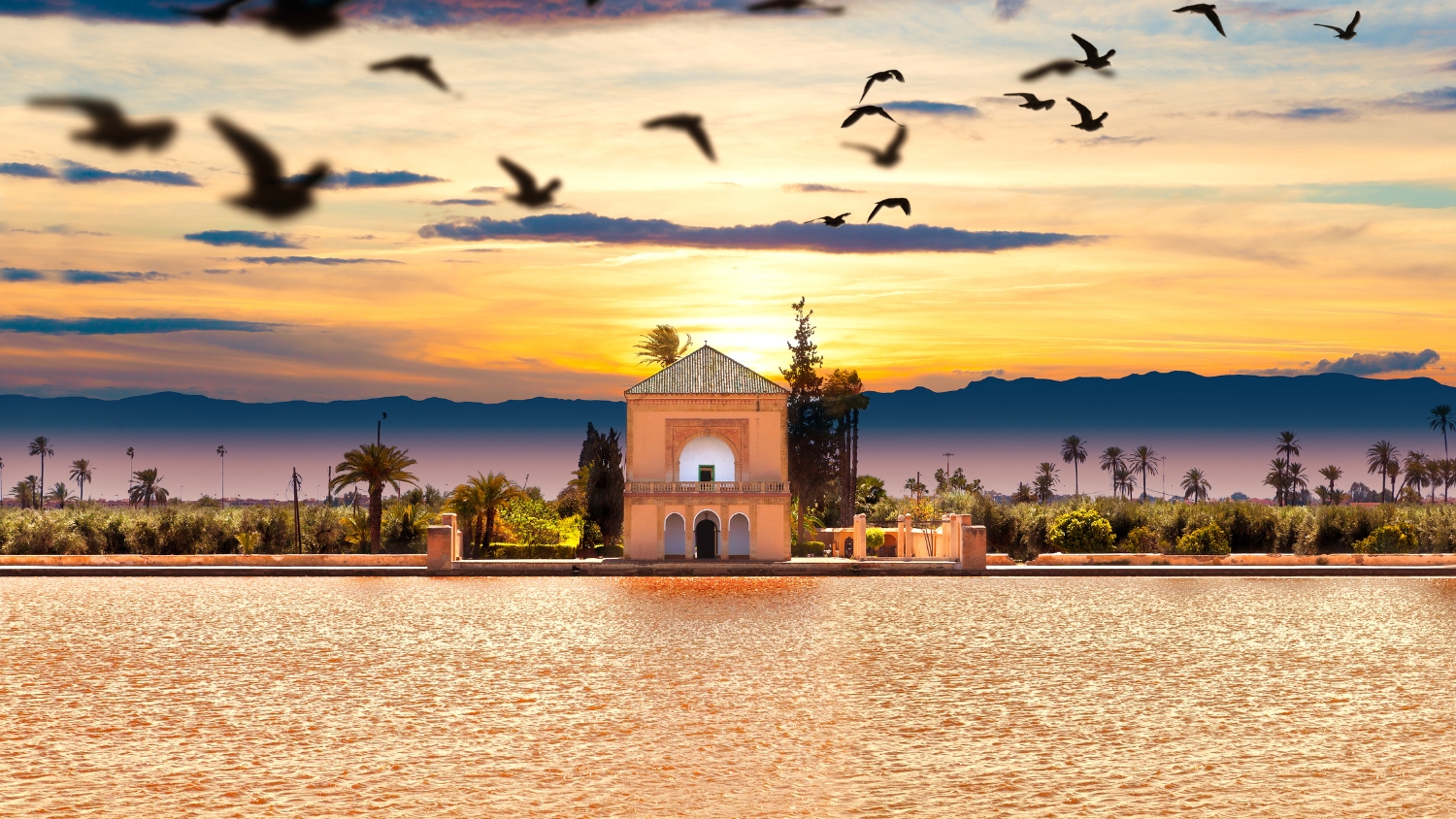Located on the sunny Costa del Sol, Marbella not only provides travellers with access to the most beautiful corners of Andalusia, but also opens the door to exotic destinations such as Morocco’s Marrakech!
Marbella, one of Europe’s most famous resorts, located on Spain’s Costa del Sol and at the foot of the Sierra Blanca mountain range and the blue Mediterranean Sea, is the ideal base from which to explore the region. Thanks to its strategic location, Marbella opens up to adventurous and mysterious trips to Marrakech, the jewel of Morocco, which will enchant you with its unique atmosphere and rich history.
Cover the “red city”
Marrakech, nicknamed the ‘red city’ because of its distinctive brick buildings, is a place with a rich and fascinating history. Founded in 1062 by Sultan Youssef ibn Tashfin, it became an important commercial and cultural centre. Over the centuries, Marrakech has attracted merchants, travellers and artists from all over the world, becoming a meeting place for different cultures and traditions. Its historic medinas, backstreets and squares teem with life, telling the story of a city that has always been a fusion of civilisations.
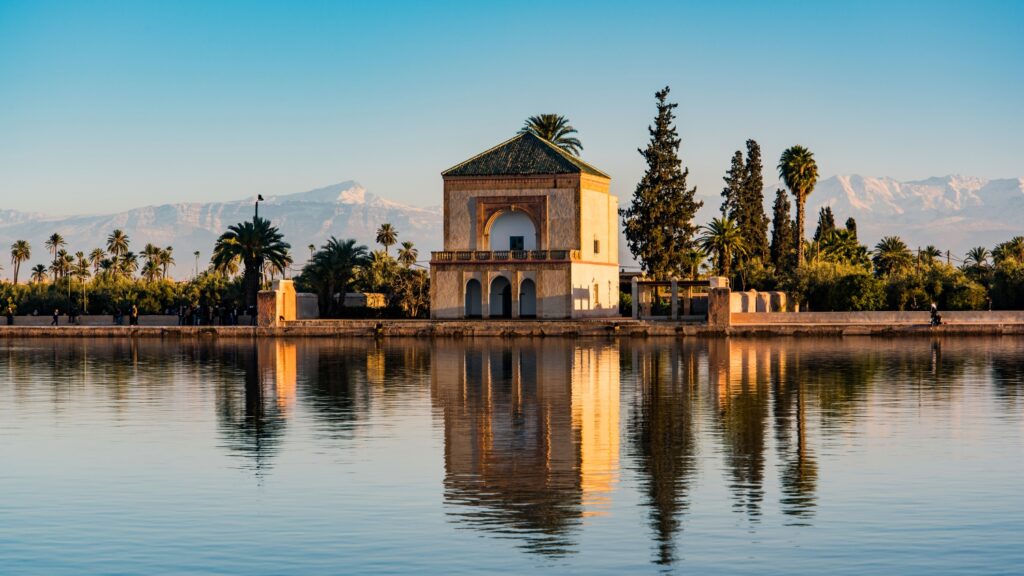
Medina and Jemaa el-Fnaa Square
Marrakech’s Medina is where pulsating life meets mysterious history. It is a labyrinth of narrow, winding streets that stretch for miles, abounding with handicraft shops, small cafes or food stalls. The red walls of the medina, which have given Marrakech the nickname ‘red city’, provide a fascinating backdrop to the colourful stalls and ancient buildings.
At the heart of the medina is Jemaa el-Fnaa, one of the most vibrant places in Morocco, where musicians, jugglers and street traders create an incredible atmosphere – full of colours, sounds and smells. Here, among the minarets shooting towards the sky and the historic palaces, you feel the true soul of Marrakech.
As you stroll through the medina, you can smell the intense aroma of spices, hear the sounds of bicycle bells and the calls of merchants, and marvel at the richness of Moroccan culture. The ancient architecture – with its detailed carved doors and shutters – makes every step a journey back in time.
The Medina in Marrakech is a true paradise for tourists and a place where every street can lead to a new discovery and every corner to an unforgettable experience. It is a place that pulsates with life, attracts its unique atmosphere and continually fascinates anyone who has the pleasure of discovering it.
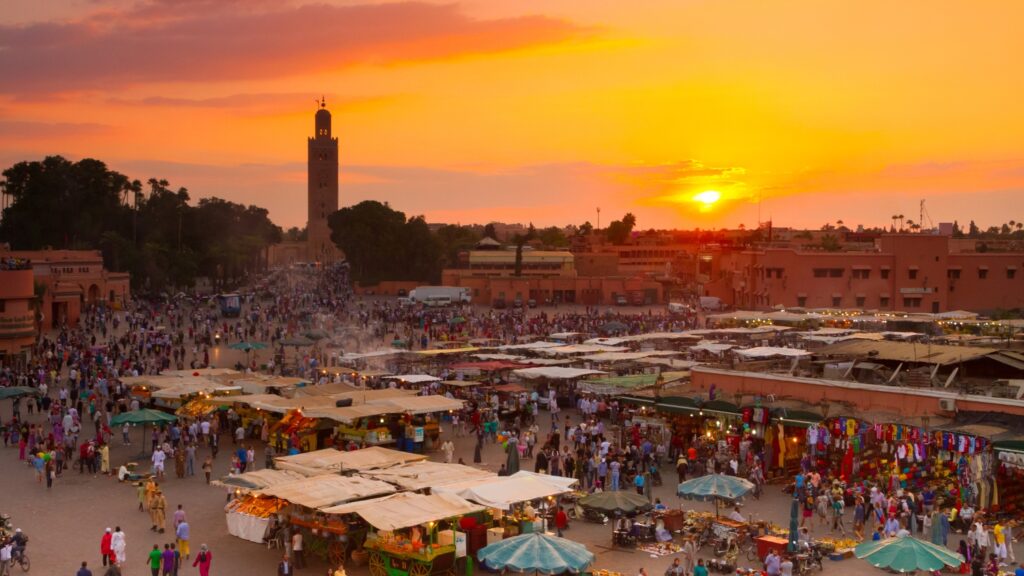
Le Jardin Majorelle
A visit to Marrakech cannot be considered successful without a visit to the Majorelle gardens, created by French painter Jacques Majorelle. Spread over almost 9,000 square metres, this enchanting place offers charming gardens – the perfect refuge where you can take a break from the hustle and bustle of the city centre, if only for a moment.
However, it is not only the beautiful greenery that attracts visitors to Le Jardin Majorelle. Within this picturesque corner, there is also a museum dedicated to Berber culture, a charming art gallery and a museum dedicated to Yves Saint Laurent. This is the place where we can discover the work of this eminent designer and learn about the inspirations he drew during his stay in Marrakech – especially when spending time in his colourful villa – situated in the heart of the garden.
La Bahia in Marrakech
The Bahia Palace in Marrakech, also known as La Bahia, is a true jewel of Moroccan architecture. Spanning an impressive 8,000 square metres, this majestic complex is undoubtedly one of the most stunning sights in Marrakech.
Its interiors, especially the Petit Riad and Grand Riad salons, are decorated with masterful marquetry and zouak ceilings, which are exquisite examples of traditional Moroccan craftsmanship. It is the Cour d’Honneur, or grand courtyard, that is the real jewel of the place. It enchants with its 1,500-square-metre floor, made of gleaming Italian Carrara marble, which adds to the place’s extraordinary charm.
Despite its enormous size, only part of the palace’s eight hectares and 150 rooms are open to the public. This monumental space not only delights, but also serves as a venue for important cultural events. The Bahia Palace is a place that breathes history and culture at every turn, becoming an essential part of any visit to Marrakech.
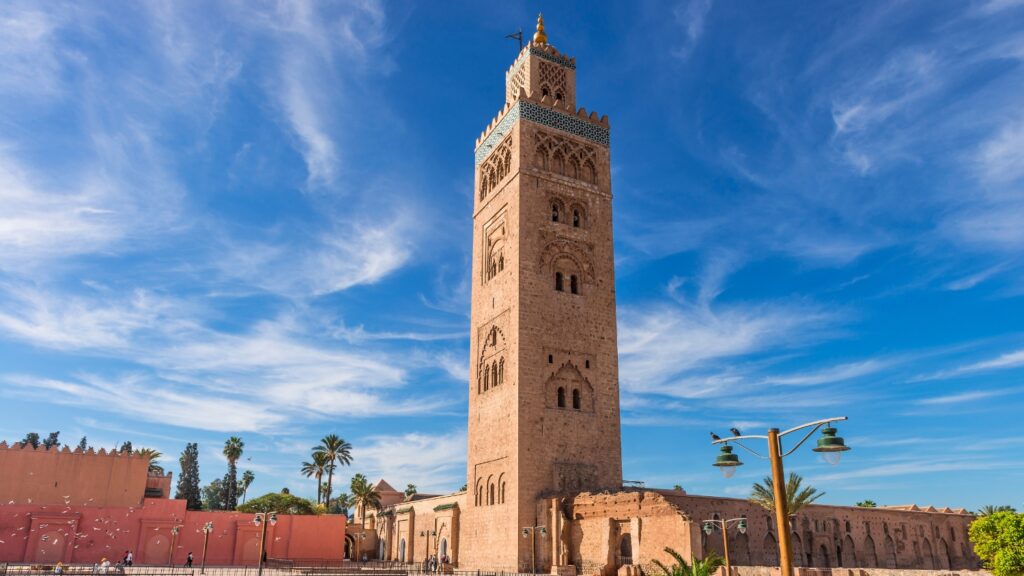
Moroccan specialities – you will fall in love with them without a memory
Discovering regional culinary specialities is one of the most enjoyable activities on trips to new places. When going from Marbella to Morocco and Marrakech, it is worth planning time to visit some local restaurants and taste the local specialities.
Moroccan cuisine is world-renowned for its rich, aromatic dishes that are the result of Berber, Arab, Andalusian and Mediterranean influences. What sets it apart from traditional Andalusian cuisine is its use of certain distinctive ingredients and spices, such as couscous, mint, dates, figs, cinnamon, Roman cumin, turmeric, ginger or saffron.
If you get the chance to visit Marrakech, be sure to try the most recognisable and popular Moroccan dishes, which include:
Tajine – This is both the name of the dish and the vessel in which it is prepared. Tajine is a stewed dish that can consist of meat (lamb, beef, chicken), fish or vegetables, as well as various spices, fruits and nuts. Characteristic of tajine is the slow cooking process, which allows the intense flavours to come out.
Couscous – A staple of Moroccan cuisine, served with vegetables, meat or fish. Couscous is traditionally prepared by steaming and can be served as a main dish or dessert, topped with honey, cinnamon and almonds.
Pastilla – A traditional Moroccan dish that is unique for its sweet and salty flavours. It is a type of pastry made from filo pastry, stuffed with roasted meat (usually pigeon or chicken), almonds and spices, then sprinkled with icing sugar and cinnamon.
Harira – A thick soup that is traditionally served during Ramadan. Harira consists of chickpeas, lentils, tomatoes, onions, meat (usually lamb), and a range of aromatic spices.
Mint Tea – Traditional mint tea is an integral part of Moroccan culture – served at the end of each meal, and throughout the day as a gesture of hospitality. This sweet, aromatic tea is often prepared with lots of fresh mint and sugar cubes.
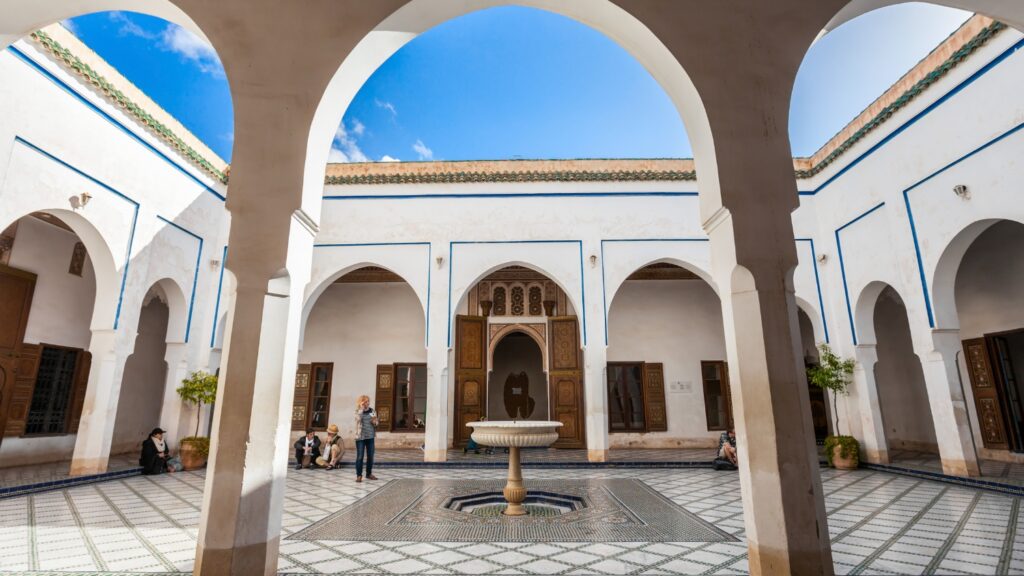
How to get from Marbella to Marrakech?
Getting from Marbella to Marrakech is easier than you might think. From Marbella, you can drive to Algeciras or Tarifa, from where ferries run to Tangier in Morocco. After crossing the Strait of Gibraltar, the journey to Marrakech takes around 10 hours by train or bus. Alternatively, there are numerous flights from nearby Malaga to Marrakech, which take around 1.5 hours.Blog
If you are looking for an unforgettable experience, inspiring sights and a chance to discover new cultures, a trip from Marbella to Marrakech should be on your list of plans. This unique trip will allow you to feel the spirit of Andalusia and Morocco and immerse yourself in the exotic flavours, smells and sounds that bring these two extraordinary worlds to life. Remember that Marbella is an ideal base not only for Marrakech, but also for other fascinating cities in Morocco, such as Fez, Casablanca and Chefchaouen.

